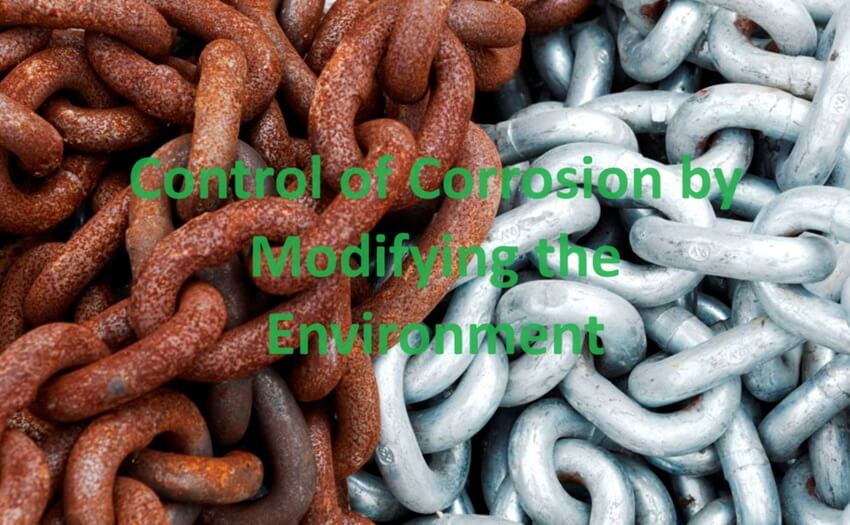In many cases corrosion can be effectively controlled by changing or modifying the corrosive environment by:
The corrosion nature is reduced by modifying the environment:
- the removal of harmful constituents in the environment and
- the addition of specific substances, which neutralise the effect of corrosive constituents of the environment.
1. Deaeration
Presence of more amount of dissolved oxygen enhances corrosion. Deaeration can be followed for removal of dissolved oxygen. This can be done by increasing the temperature or by applying mechanical agitation.
2. Deactivation
Deactivation is a process of removing dissolved oxygen by adding some chemicals in aqueous solution, as listed below.
- Addition of sodium sulphite.
- Addition of hydrazine.
3. Dehumidification
By lowering the relative humidity of air, the moisture in the air can be reduced. This can be done by adding silica gel (or) alumina which can absorb the moisture from the corroding surface.
This is used only in a closed area like air-conditioned shop.
4. Alkaline neutralisation
The acidic character of the corrosive environment due to the presence of H2 S, HCl, CO2, SO2 etc. can be neutralised by spraying alkaline neutralisers like NH3, NaOH, lime etc.
This method is used to control corrosion in refinery equipment.
5. Corrosion inhibitors
An inhibitor is a substance when added to a corrosive environment in small quantities, decreases the corrosion rate. Chemical reagents which are effective in reducing anodic reaction are called anodic inhibitors and those which reduce cathodic reaction are called cathodic inhibitors.
| Read More Topis |
| Types of electrochemical corrosion |
| Factors influencing the corrosion |
| Definition and origin of electrode potential |






